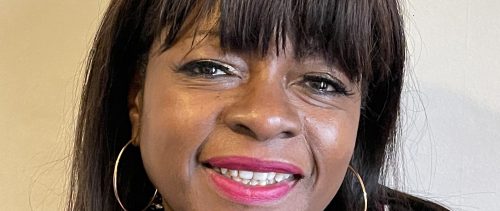- The Expert View
HOW TO REDUCE UNCONSCIOUS BIAS IN THE WORKPLACE
In order to keep up with the stimuli around us, we create mental shortcuts that seemingly make decision-making easier, however, many of these shortcuts do more harm than good. We asked the experts how to mitigate unconscious bias in the workplace.More Questions
We asked the industry experts...
How to reduce unconscious bias in the workplace

Marcia Hazzard
Consultant at Included
The first step to reducing our own bias is to first recognise it. We can do this by undertaking the various bias indication tests that are out there, however, we can also elicit feedback from wider perspectives around us.Know more about Marcia Hazzard →
So how can we reduce unconscious bias in the workplace? There are practical steps that we can take.
Firstly, we can examine our organisation, looking at our workplace data to really establish what it looks like. Is the organisation full of the same kinds of people – age, ethnicity, gender, educational background, etc? If so, question the hiring processes and debias the profile of potential hires.
Secondly, we can look at our decision-making processes – who makes the decisions, and is there an adverse impact on those that they affect?
Thirdly, we can engage employees in the conversation – where do they consider any biases are within the system and what do they think the company should be doing about them?

Anu Mandapati
Global Diversity, Equity & Inclusion Leader and Executive Coach
Disrupting unconscious or implicit bias starts with increasing our awareness and then moving from awareness to action. All of this needs to be done at 4 levels to truly shift in this area. These levels are individual, interpersonal, team and organizational. Awareness comes from learning what types of biases exist and exploring where they can show up in each of these levels.Know more about Anu Mandapati →
Learning is the first step and then it's important to amplify and sustain the learning so people can take impactful action. I call this the LEARN AMPLIFY SUSTAIN model. If we don't amplify and sustain the new skills, the learning will be "out of sight, out of mind." Ways we can amplify our learning include opportunities to practice our new skills. Practicing realistic company and role specific scenarios in dyad or triad groups and discussing what felt easy and what was challenging helps the learning and new skills "stick." Ways we can sustain the learning can come at the team level. Most of us spend a majority of our work time with our team. So having team discussions on the team culture we want to create, what our individual and team inclusion goals are, how do we address bias when it happens on our team, and where we need support and accountability help normalize these conversations. Teammates can openly share and provide feedback when behavior is in and out of alignment to the individual and team commitment.

Barjis Chohan
Chief Executive Officer at BARJIS
To reduce unconscious bias in the workplace we should do the following:Know more about Barjis Chohan →
• Remove names, date of birth and not ask for ethnicity on their CV. Most of the time, the screening is done at this stage.
• Focus on diversity and inclusion at the board level. As a diverse board will ensure that we understand cultural nuances and look at problems from different perspectives.
• Don’t be afraid to have uncomfortable questions. Ask your colleagues, 'how can I make the workplace comfortable for you?' 'Do you require a prayer area?'

Chelsea C. Williams
Workplace & Career Strategist, International Speaker, Founder & CEO of College Code
We can reduce unconscious bias by first understand that everyone has biases. We should realize it is a part of the human experience, although some make more of a conscious effort to acknowledge and reduce bias than others.Know more about Chelsea C. Williams →
Through education, awareness, and connection, biases can be mitigated, and individuals can celebrate diversity and foster inclusion and equity. It takes mindfulness and intention.
Related Questions
ASK OUR EXPERTS
Headspring is a joint venture between the Financial Times and IE Business School established in 2015. Our highly influential FT journalists deliver a unique perspective on the events that shape the world of business, and our IE faculty brings an entrepreneurial mindset with a sharper edge and greater impact through technological immersion and a culture of innovation.